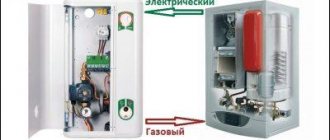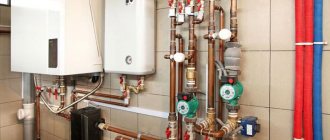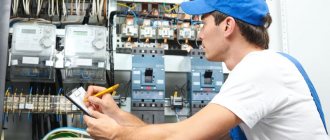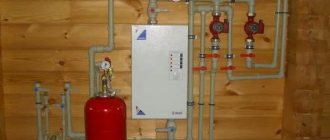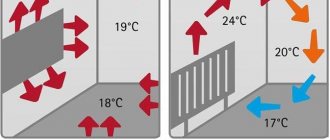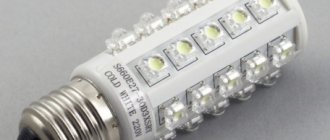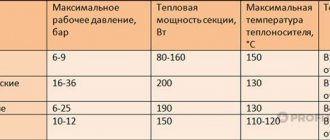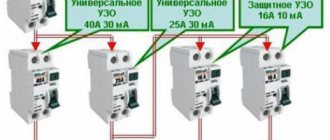Few country or private houses can boast of being connected to a main heating system.
This is what an electric boiler for heating a private house looks like
In the vast majority of cases, concerns about choosing and designing heating systems in such dwellings fall on the shoulders of their owners. There are many options to choose from, but many of them also depend on external conditions. Thus, the lack of gas supply does not allow the construction of a heating system based on gas boilers.
Systems based on liquid fuel require compliance with strict safety standards and special qualifications during installation and operation. In this case, a smart choice for heating a private home would be to purchase an electric boiler. Modern industry produces a lot of modifications of such devices for any operating conditions.
Basic elements of electric boilers
Regardless of the power of the electric boiler and its main purpose, it consists of the following main elements:
- The housing, which serves as a container for all components.
- A heat exchanger, which serves to transfer heat from the heating element to the coolant tank,
- Control, control and adjustment units.
A number of models of electric boilers may also have built-in circulation pumps to ensure the movement of coolant, and valves that redirect its flow.
A modern electric boiler is a high-tech device that heats flowing water with maximum efficiency, while operating in a completely autonomous mode. Even a child can operate such equipment - it is so safe and simple. Also, modern electric boilers have a fairly high efficiency, which will allow you to avoid unnecessary bills for wasted electricity.
water supply distribution
There is a great variety in the design of such electric heating devices. They come in a variety of shapes, with wall or floor placement.
Principle of operation
The purpose of the boiler is to increase the temperature of the coolant in the heating circuit. The heating method depends on the design features of the device.
Heating elements new boilers
The heating element of the installation is a metal tube, inside of which ceramic chips or quartz sand are placed. In the middle there is a rod made of nichrome or tungsten. The contacts are connected to electrical wires. In operating mode, voltage is applied to the spiral. Due to its high resistance, it begins to heat up and transfers thermal energy to the water. The heating elements are placed inside a tank filled with liquid.
Attention! Manufacturers recommend using antifreeze or demineralized water as a coolant.
The container can be placed vertically or horizontally. When the boiler is operating, the heating element is always hidden under the liquid, otherwise the heating element will quickly fail. To control the temperature and pressure inside the tank, sensors are used that transmit operating parameters to the control unit. To ensure coolant circulation in the circuit, many models are equipped with an electric pump.
Commissioning is accompanied by a sharp jump in energy consumption, because All heating elements are turned on at the same time. When the coolant reaches the specified parameters, the boiler maintains the water temperature at a constant level.
Induction boilers
Devices of this type use the effect of electromagnetic induction. A metal rod is placed in a coil with a given number of turns. In this case, eddy currents are formed, causing an increase in the temperature of the element. The core heats the circulating coolant.
The device is a cylinder with an inductance coil built in along its entire height. There is a metal core inside. The free space is filled with coolant. Thyristor starters are used to regulate power.
When voltage is applied to the coil, the core begins to heat up, transferring energy to the liquid.
Induction installations are reliable and long-lasting. The efficiency of the devices reaches 99%. Using demineralized water or antifreeze as a coolant relieves the consumer of problems with scale.
The units are compact, which allows the devices to be mounted on the wall of the room. There are productive devices whose power reaches 60 kW.
Electrode boilers
The operation of these installations is based on the conductivity of water containing metal salts. A current is passed through the coolant, which causes ionization of the solution. Charged particles move towards the electrodes. Due to the internal resistance of the molecules, the liquid begins to heat up.
Attention! Distilled water cannot be used in electrode boilers. Metal salts provide electrical conductivity of the coolant.
An electrode heating boiler consists of a cylindrical tank, the outer part of which is covered with insulation. An electrode connected to the phase is installed inside. The housing is connected to the neutral cable. When voltage is applied, the temperature of the coolant begins to increase sharply.
Devices operating on the principle of solution ionization are compact in size and highly reliable. Powerful units are designed for connection to a 3-phase electrical network. Sequential installation of several boilers is allowed. A feature of electrode generators is the inability to control the power of the device. The device can only operate at full capacity. Adjusting the water temperature is achieved by turning the device off and on.
Operating principle of an electric boiler
Almost all electric boilers operate on the same principle: a heating element is placed in the heat exchanger, which, after applying electric current to it, begins to generate heat. The coolant entering the heat exchanger (usually simple tap water, and in closed heating circuits water with special additives or antifreeze) is heated after contact with the heating element.
By the way, water can be heated not only by a traditional heating element (that is, a heating coil enclosed in a protective casing), but also by induction or electrode methods. However, it is electric boilers with heating elements that are most widespread, both among imported and domestic models.
heating circuit
The power supply for heating boilers is also very diverse. They can be powered from standard household 220 volts, or they can have industrial power supply with three phases at 380 volts. There are even modifications that are powered by batteries.
What's bad and what's good about electric boilers?
The undoubted advantages of electric boilers designed for heating private houses include:
- Very simple installation, which is accessible even to untrained users.
- If there is good electrical wiring in the house that can withstand the required current, such a boiler does not require additional electrical work. The water distribution when installing an electric boiler is also extremely simple.
- There is no need to install such a boiler in a separate room. The safety measures during its installation are quite gentle and it can be located in any utility room.
- Heating boilers that run on electricity differ better from their gas and solid fuel counterparts in weight and size.
- Such boilers are very easy to maintain and do not require constant cleaning and routine maintenance.
- The electric boiler does not emit combustion products and is an absolutely environmentally friendly device.
- The efficiency of modern electric boilers reaches 98 percent, which allows you to save on heating.
But the operation of electric heating boilers also has some disadvantages:
First of all, a boiler that runs on electricity is very critical to the quality of the electrical wiring in the house. Installing such systems in old buildings may require additional costs for installing electrical wiring of the required cross-section.
electric boilers
In some cases, the energy consumption of a heating boiler can lead to additional costs, especially in areas with high electricity rates.
Types of electric heaters
Three types of devices are used in everyday life:
- Heating element new. The liquid is heated in a tubular heat exchanger. The units are characterized by their low price and ease of maintenance. Sensitive to scale formation on the walls of the heating element.
- Electrode. Heating is carried out due to ionization of the coolant under the influence of current.
- Induction. The devices use the effect of electromagnetic induction to increase the temperature of a liquid. The peculiarity of the installation is its high cost and low energy consumption.
To organize heat supply for a private home or cottage, any type of heating device is suitable.
How to choose an electric boiler for heating a private house and calculate the required power.
In order to correctly choose an electric boiler model for heating and hot water supply to your home, you first need to determine the required power of the electric boiler. There are both modest wall-mounted electric boilers with a capacity of 2.5 kilowatts and stationary installations, the effective power of which is measured in tens of kilowatts.
To calculate the required power of an electric boiler, you can use a fairly simple formula - divide the area of the heated premises by 10. The resulting figure will show the required power of the electric boiler in kilowatts. So, if you plan to heat a house with an area of 90 square meters using an electric heating device, then the minimum required power of the electric boiler will be 9 kilowatts.
Factors such as the material from which it is built, the degree of insulation and external climatic conditions will significantly affect the energy consumption figure for electric heating of premises. All this can make significant adjustments to the required power. Automating the heating process can also significantly reduce energy consumption - maintaining several temperature modes, automatically switched by timer. In this case, the heating will not provide maximum heating during your absence, but will only maintain the minimum required temperature level.
Cost of electric boilers
The price range for electric heating boilers is as wide as their model range. The price of such devices depends on both the power and the functions implemented. In addition, the final cost of installing an electric heating system is significantly influenced by the purchase of additional equipment.
A small wall-mounted device costs several thousand rubles, which can provide an acceptable temperature in a small country house, but for an apartment building the price of such equipment will already be several tens of thousands of rubles.
How to install an electric boiler in a private house yourself (diagram)?
Modern electric boilers, despite all their high-tech, are quite simple devices to install. A schematic diagram of the installation of a typical electric heating boiler is shown in the figure.
electric boiler installation diagram, necessary system elements
However, as the design of the boiler becomes more complex and additional circuits are included in the heating system, the installation of such devices also becomes more complicated. Developed systems include not only heating circuits (of which there may be several according to the number of rooms in the house), but also a hot water supply circuit. Each circuit can be equipped with individual temperature sensors, drain and shut-off valves, an inlet filter for coolant water, and circulation pumps.
Therefore, the installation of a heating system based on an electric boiler in a private house must begin with drawing up a detailed project. The project must reflect the required power of heating electrical equipment, calculate the required number and length of pipelines for organizing the circuits of heating and hot water supply systems, as well as all peripheral equipment.
Important!!! If you start installing a heating system without first assessing power consumption and developing a project, you may make a critical mistake and end up with either a cold house or excessive electricity consumption. In this case, you are unlikely to be able to save money ! Any mistake in calculations will hit your pocket hard!
After drawing up the project and calculating the power, the power supply system is reviewed - if necessary, new wires are laid, and a separate emergency switch is installed in the distribution panel.
In the future, the installation of the heating and water supply system is carried out according to the general rules for the construction of such systems. When installing yourself, at least at the stage of calculation and drawing up the project, we recommend that you take advantage of specialist consultations.
Cost of connecting an electric heating boiler
Connection prices depend on the amount of work that needs to be done, the region and the company/master. In Moscow and the Moscow region, the cost of work averages 4,200-12,500 rubles, in St. Petersburg - 3,900-8,000 rubles, and in the regions - 3,500-7,000 rubles. The price includes installation and connection exclusively of an electric boiler, less often - an electric boiler and 1 radiator.
The cost of connecting other elements of the heating system such as an expansion tank, circulation pump, indirect heating boiler or heated floors is calculated separately and can amount to another 2-5 thousand rubles. The average time to complete the work is 2-4 days.
Instructions BoilersElectric boilers

